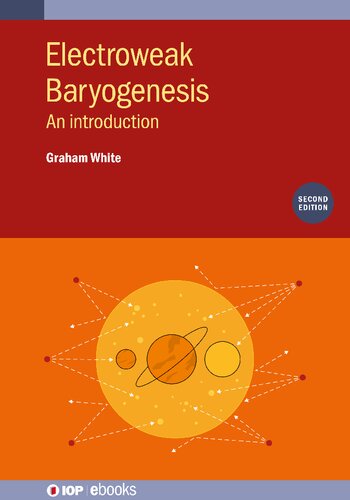

Most ebook files are in PDF format, so you can easily read them using various software such as Foxit Reader or directly on the Google Chrome browser.
Some ebook files are released by publishers in other formats such as .awz, .mobi, .epub, .fb2, etc. You may need to install specific software to read these formats on mobile/PC, such as Calibre.
Please read the tutorial at this link: https://ebookbell.com/faq
We offer FREE conversion to the popular formats you request; however, this may take some time. Therefore, right after payment, please email us, and we will try to provide the service as quickly as possible.
For some exceptional file formats or broken links (if any), please refrain from opening any disputes. Instead, email us first, and we will try to assist within a maximum of 6 hours.
EbookBell Team

4.8
44 reviewsThis book introduces the theory and formalism of electroweak baryogenesis. It provides a pedagogical overview to help enable researchers to overcome the steep learning curve associated with entering this field, ensuring that the high energy physics community is adequately equipped to interpret the next generation of experimental results.
For the first time, this book draws together a range of topics essential to cutting-edge research into electroweak symmetry breaking, including thermal field theory, gravitational wave theory, dimensional reduction, topology and anomalies in quantum field theory as well as charged transport out of equilibrium. It covers the cosmic baryon asymmetry, the chiral anomaly, baryon violation in the Standard Model, the sphaleron, an introduction to thermal field theory, electroweak symmetry at high temperature, dynamics of the phase transitions, dimensional reduction, gravitational waves and charge transport.
This expanded second edition includes an overview of novel calculation techniques not covered in the first edition, as well as an updated discussion of gravitational waves, collider signatures and electric dipole moments.
It is an excellent reference for graduate students and researchers familiar with graduate level quantum field theory.
Key Features: